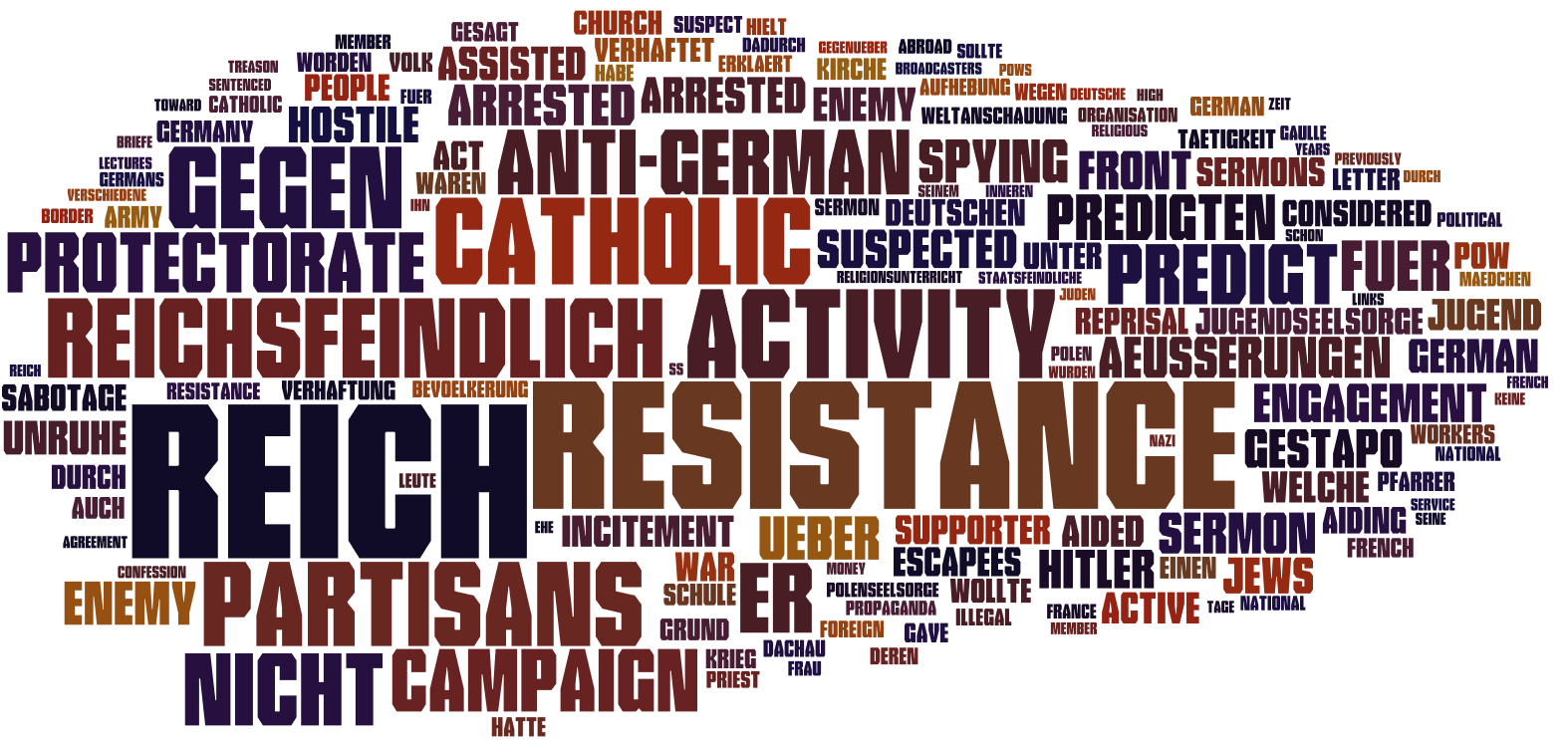Animated Maps Using Carto
The above visualization, produced using Carto, shows the locations of clergy as a function of arrest date. The locations were assigned based on each clergyman's diocese, if such information was available (for a more detailed discussion of this, please refer to the Carto page).
Note that the user can interact with the map by selecting a period of time on the timeline, which reveals a distribution of points on the map corresponding to those who were arrested during the selected time period. For a screenshot demonstrating how this feature works, please refer to the Carto page.
At the beginning of the animation, most of the locations are concentrated around Dachau Concentration Camp. As seen in the animation, in late 1939, the first Polish and Czech clergy were arrested; this is consistent with the information presented in The Dachau Concentration Camp, 1933 to 1945: "On September 10, 1939, 551 Czech citizens were taken hostage and deported to the Dachau concentration camp. The first 99 Poles followed shortly after." [1] Accordingly, by 1940, following the invasion of Poland in September of 1939, a large fraction of priests being arrested were Polish nationals. Indeed, from February through December of 1940, 13,375 Poles were sent to Dachau, the large majoirty of whom were from the new territory of the Reich. [2] The strong concentration of clergy from Poland and Germany persists in the animation until 1944, at which time French nationals began to be arrested. The late arrest dates of French nationals are corroborated by the histograms presented in this section of the exhibit -- the historical reason for this is discussed at length in the analysis of the histograms broken down by nationality, which can be found here.
Below is the analogous visualization for arrival dates at Dachau Concentration Camp:
In many cases, clergy members were not initially sent to Dachau Concentration Camp but instead were sent to other concentration camps first; they were then transferred as many as five times before arriving at Dachau. Consequently, many of the same features present in the arrest date visualization are present here, except that the dates are shifted later. However, interesting information from the arrival dates can still be extracted, as evidenced by the histograms organized by nationality in this section. Furthermore, one can see that even though Polish and Czech clergy were arrested as early as late 1939, they did not arrive at Dachau Concentration Camp until later; as described in Legacies of Dachau: The Uses and Abuses of a Concentration Camp, "in 1938 and 1939, only forty-nine German and Austrian clergymen were imprisoned in Dachau, primarily for political reasons. After the consolidation in 1940, there were more than 1,000 priests in Dachau, about 4 percent of the 23,000 inmates in the camp that year." [3] This can be seen in the visualization of arrival dates: there are a few scattered dots before 1940; during 1940, the number of dots increases dramatically, and the dots are concentrated within Poland.
1 Page 113. Distel, Barbara, and others, eds. The Dachau Concentration Camp, 1933 to 1945. 3rd ed. Munich: Comite International de Dachau, 2005.
2 Page 20. Distel, Barbara, and others, eds. The Dachau Concentration Camp, 1933 to 1945. 3rd ed. Munich: Comite International de Dachau, 2005.
3 Page 43. Marcuse, Harold. Legacies of Dachau: The Uses and Abuses of a Concentration Camp, 1933-2001. Cambridge: Cambridge University Press, 2001.
